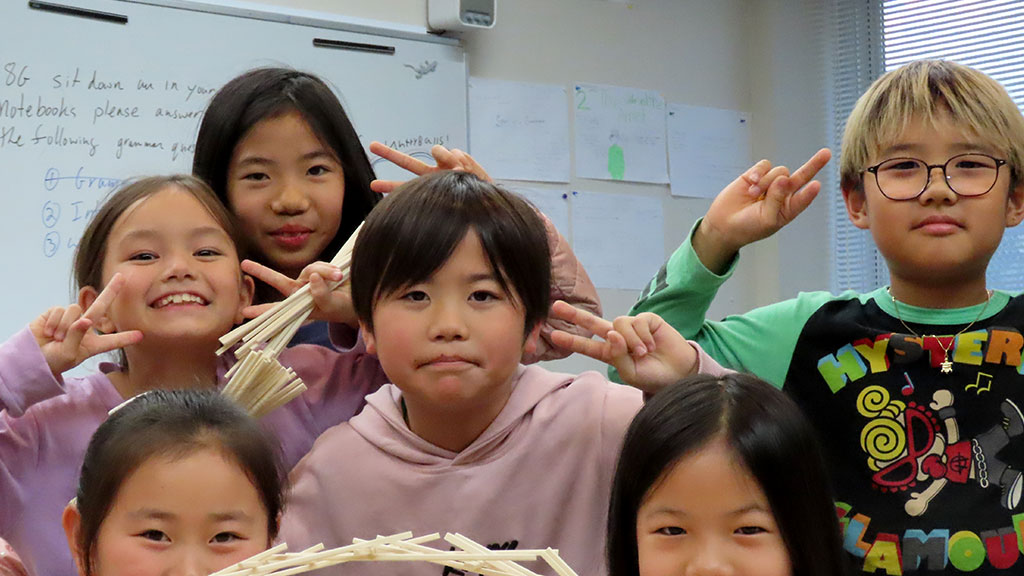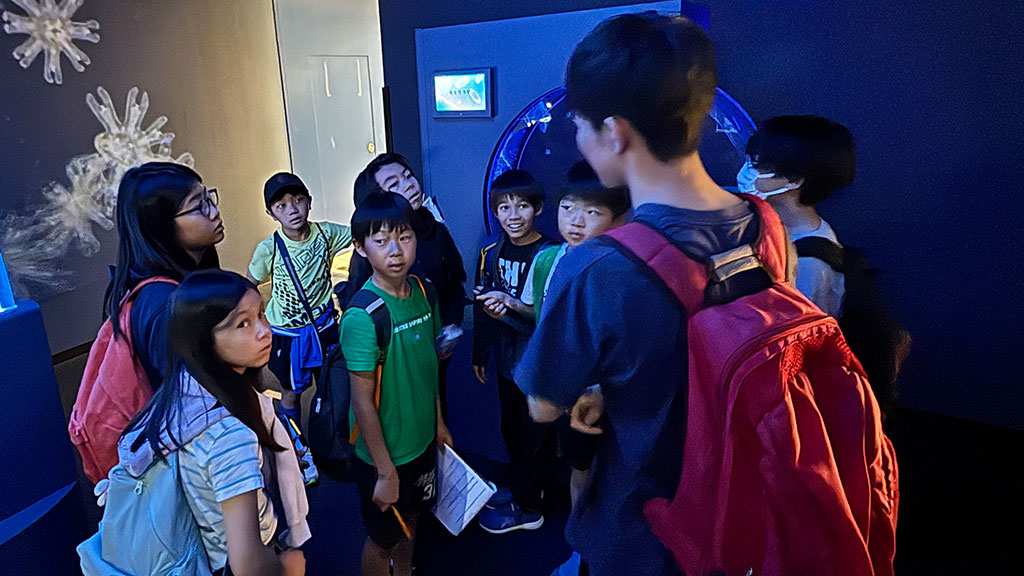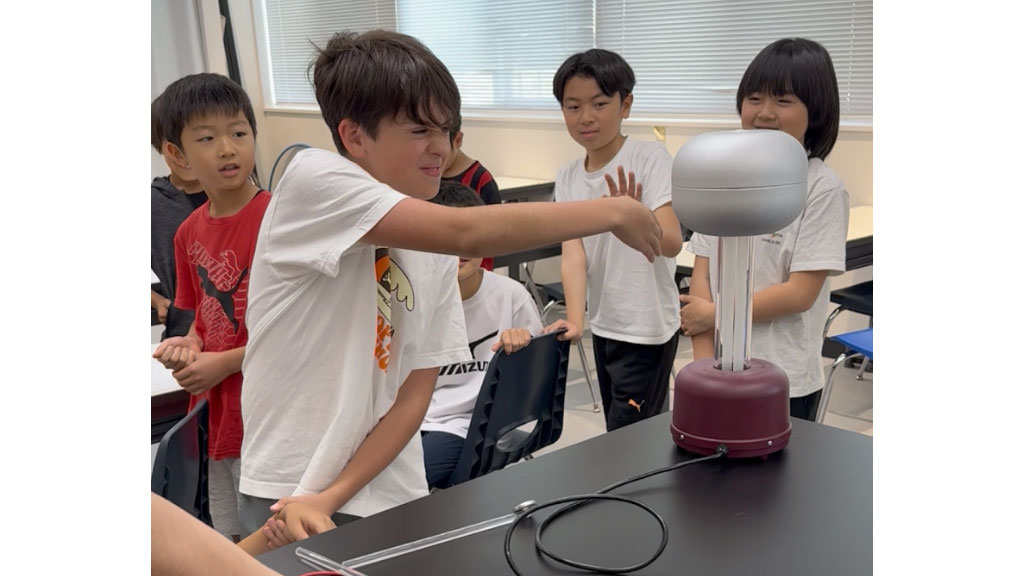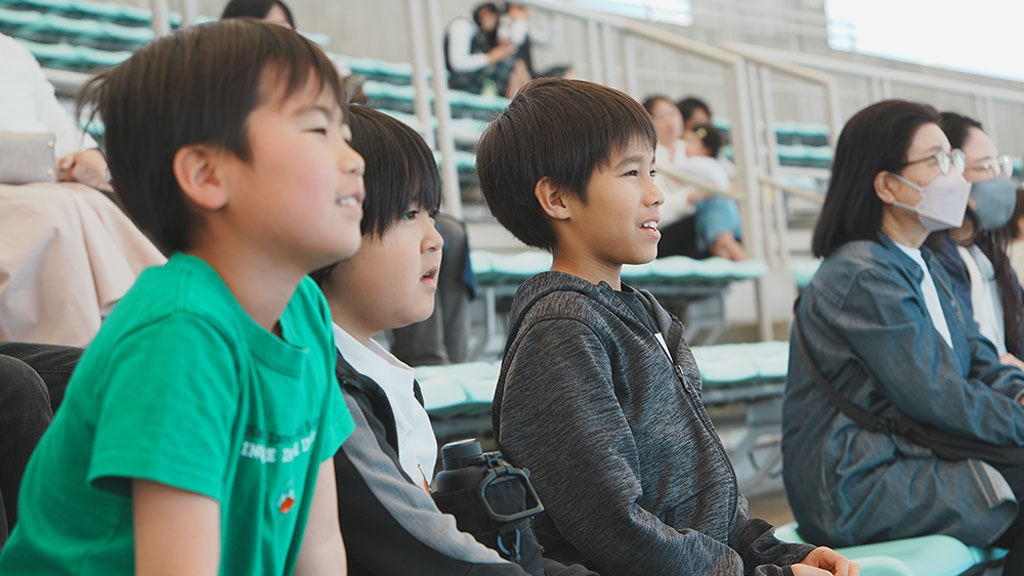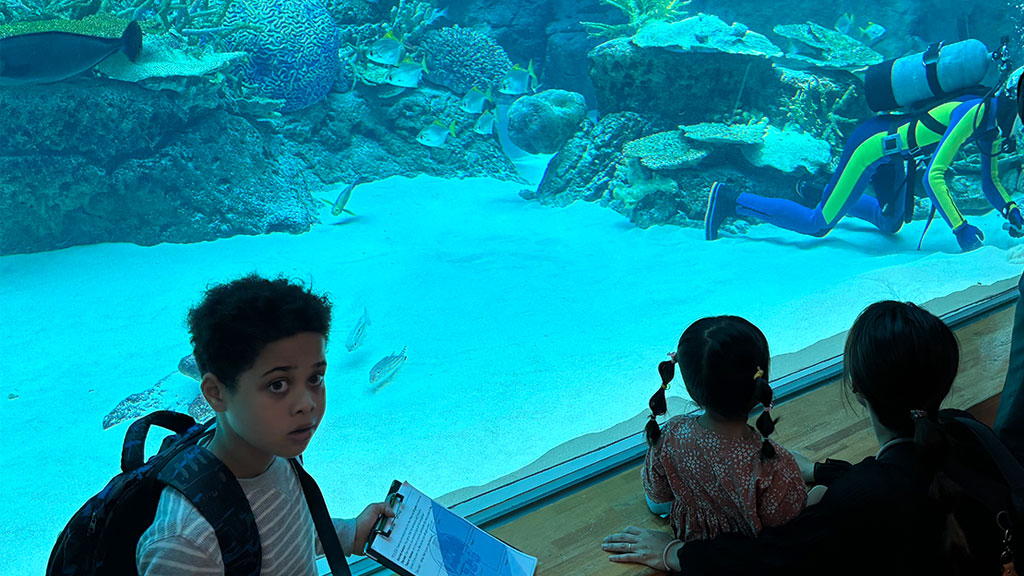
A day in the life of a Gr. 11 student at NIS is full. They are balancing an increase in academic requirements along with extracurriculars, and whether they are in the IBDP program or the high school diploma program, they are required to do a CAS project to complete their requirements for graduation. For this rite-of-passage project, they are encouraged to lead with initiative, think creatively, and give back to their community. This spirit was on full display when two Gr. 11 students, Takaya and Wenda, turned their love of science—and their leadership potential—into one of the most unique CAS projects the school has seen: organizing and leading not one, but two extended learning field trips for elementary students.
It all started with a dream—literally. Takaya had been searching for a CAS project that hadn’t been done before when an idea came to him in bed: what if older students planned and led an extended learning trip for younger learners? Together with Wenda, who shared his enthusiasm for teaching and mentoring younger students, the pair decided to take their existing science club, the Creative Crafts & Science Club, and add a service element. The result? Two extended learning trips, one to the Nagoya Science Museum in November and the other to the Nagoya Aquarium in April, designed and led entirely by students for their younger classmates in Gr. 3, 4, and 5.
"We chose this age group because they’re the most curious and inquisitive,” said Takaya. “It's easier to teach because they want to know everything.”
These were not just casual outings—they were thoughtfully designed educational extensions of the club’s weekly science activities. For example, at the Science Museum, they knew that they could introduce students to concepts like rocket propulsion…one of the projects their club was passionate about.
The Art of Planning: From Dream to Reality
The scope of planning was impressive. The students began by drafting a formal proposal for the Primary Principal, Mr. Peterson. From there, it took coordinating with homeroom teachers, their club supervisors, the school office, and the Operations Manager, who helped arrange transportation. Safety was a top priority; they conducted site visits to assess risks, identified AED locations, bathrooms, and emergency exits, and for their second trip, developed a multi-tiered system of group leaders that included assigning elementary students responsibility for their groups, to ensure all students were accounted for at every stage of the trip.
“It was a daunting task,” admitted Wenda. “But by staying organized and dividing responsibilities based on our strengths, we pulled it off.” Wenda led the communication efforts, while Takaya focused on writing the required documents, including risk assessments, permission forms, and detailed schedules.
Learning in Action
From their perspective, the days of the field trips went more smoothly than they could have ever expected, thanks to the months of preparation. However, one hiccup had them having to problem-solve on the fly! With just days to go, they realized they were short on funds for the entrance fees for the aquarium! Their communication skills came into play as they negotiated extra money from the PYP budget, their club coffers, and finally the Secondary Student Council, who chipped in at the last minute to save the budgetary oversight. But for all the hard work and last-minute stress, the smiles and excitement of their younger peers made all the effort worth it.
For the Grade 3 students, the trips weren’t just fun—they were enriching. “They told us they wanted more experiences like this,” said Wenda. “That was the best feedback we could’ve received.” Both Wenda and Takaya reflected on the reciprocal benefits of having students lead these kinds of activities. ”We have different relationships with the younger kids compared to the teachers. We got to know each other during lunch, and were able to go into the shops and choose what we wanted and buy with the younger kids,” commented Takaya. Wenda added, “These experiences were valuable both for them and us because the way our school days are set up, we really don’t get to know each other very well. This was definitely an impact that will last, I think.”
Growth Through CAS
The CAS program in the IB Diploma Program is designed to foster student growth in three key areas: creativity, activity, and service. This project ticked all three boxes. It pushed Takaya and Wenda to think creatively in designing their club and field trips, stay active in their hands-on scientific explorations, and serve their school community by inspiring the next generation of learners.
Leadership, organization, and communication were among the top skills they developed. “We saw our communication and leadership skills grow each week,” Wenda reflected. “By the second trip, planning was twice as fast, even though more students joined.”
Takaya added, “We wanted to give the younger students something meaningful, and in doing that, we found something meaningful for ourselves.”
Lasting Impact and Looking Ahead
They hope some of the Grade 5 students who joined the trips will carry on the club’s legacy in middle school. For now, Takaya plans to stay involved while encouraging younger students to take on leadership roles of their own.
Their advice to other CAS students? “Do something that benefits your school community,” Wenda said. “It’s incredibly fulfilling.”
Takaya put it best: “It’s a win-win. You just have to put in the time and effort.”
Their story is a shining example of what the IB program at NIS aims to cultivate—student agency, a spirit of inquiry, and a heart for service.


